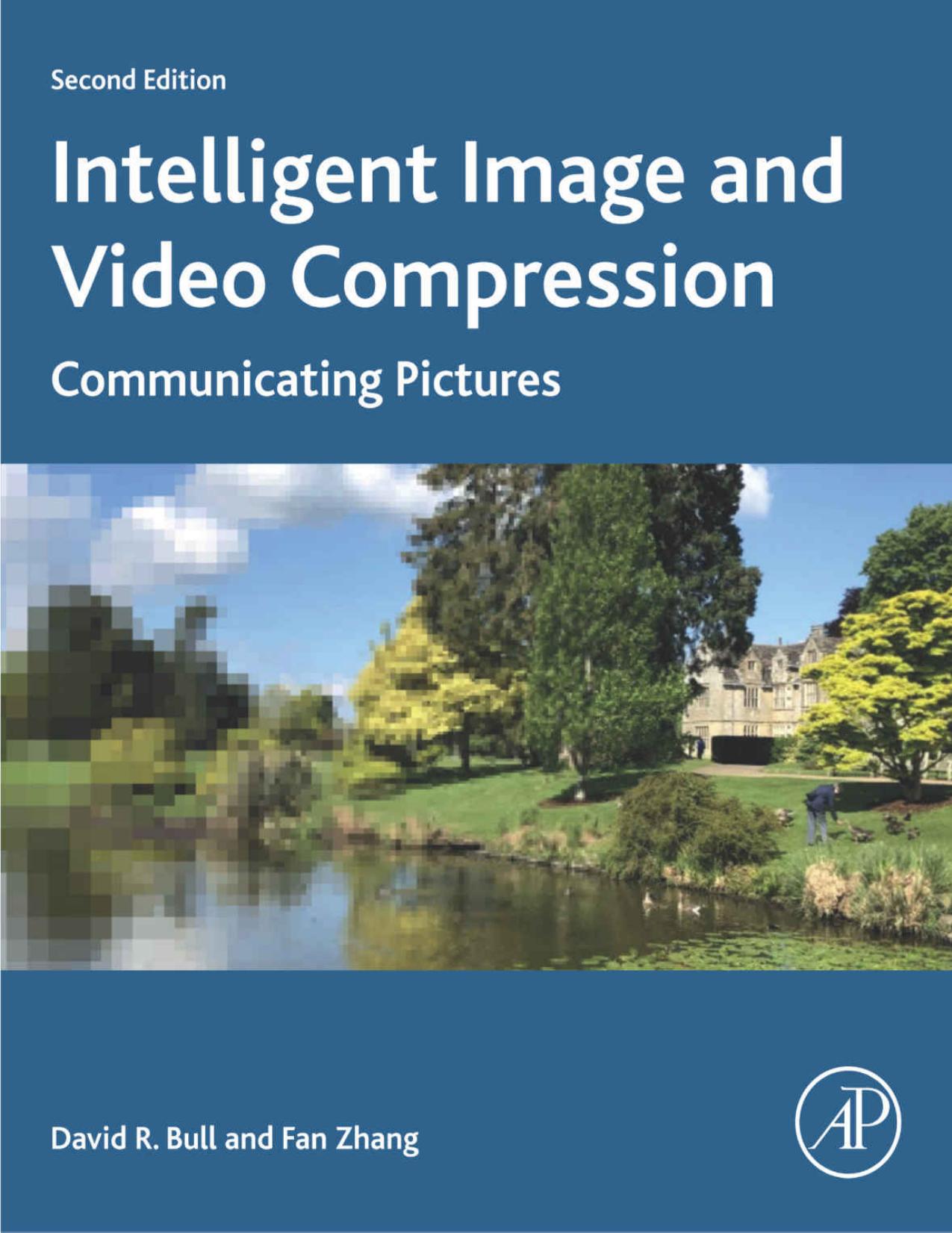Intelligent Image and Video Compression Communicating Pictures 2nd Edition by David Bull, Fan Zhang 9780128203545 0128203544
$70.00 Original price was: $70.00.$35.00Current price is: $35.00.
Instant download Intelligent Image and Video Compression Fan Zhang & David Bull after payment
Intelligent Image and Video Compression Communicating Pictures 2nd Edition by David Bull, Fan Zhang – Ebook PDF Instant Download/Delivery: 9780128203545, 0128203544
Full dowload Intelligent Image and Video Compression Communicating Pictures 2nd Edition after payment

Product details:
• ISBN 10:0128203544
• ISBN 13:9780128203545
• Author:David Bull, Fan Zhang
Intelligent Image and Video Compression
Communicating Pictures
Intelligent Image and Video Compression: Communicating Pictures, Second Edition explains the requirements, analysis, design and application of a modern video coding system. It draws on the authors’ extensive academic and professional experience in this field to deliver a text that is algorithmically rigorous yet accessible, relevant to modern standards and practical. It builds on a thorough grounding in mathematical foundations and visual perception to demonstrate how modern image and video compression methods can be designed to meet the rate-quality performance levels demanded by today’s applications and users, in the context of prevailing network constraints.
“David Bull and Fan Zhang have written a timely and accessible book on the topic of image and video compression. Compression of visual signals is one of the great technological achievements of modern times, and has made possible the great successes of streaming and social media and digital cinema. Their book, Intelligent Image and Video Compression covers all the salient topics ranging over visual perception, information theory, bandpass transform theory, motion estimation and prediction, lossy and lossless compression, and of course the compression standards from MPEG (ranging from H.261 through the most modern H.266, or VVC) and the open standards VP9 and AV-1. The book is replete with clear explanations and figures, including color where appropriate, making it quite accessible and valuable to the advanced student as well as the expert practitioner. The book offers an excellent glossary and as a bonus, a set of tutorial problems. Highly recommended! –Al Bovik
- An approach that combines algorithmic rigor with practical implementation using numerous worked examples
- Explains how video compression methods exploit statistical redundancies, natural correlations, and knowledge of human perception to improve performance
- Uses contemporary video coding standards (AVC, HEVC and VVC) as a vehicle for explaining block-based compression
- Provides broad coverage of important topics such as visual quality assessment and video streaming
Intelligent Image and Video Compression Communicating Pictures 2nd Table of contents:
Chapter 1: Introduction
Abstract
1.1. Communicating pictures: the need for compression
1.2. Applications and drivers
1.3. Requirements and trade-offs in a compression system
1.4. The basics of compression
1.5. The need for standards
1.6. The creative continuum: an interdisciplinary approach
1.7. Summary
References
Chapter 2: The human visual system
Abstract
2.1. Principles and theories of human vision
2.2. Acquisition: the human eye
2.3. The visual cortex
2.4. Visual fields and acuity
2.5. Color processing
2.6. Spatial processing
2.7. Perception of scale and depth
2.8. Temporal and spatio-temporal response
2.9. Attention and eye movements
2.10. Visual masking
2.11. A perceptual basis for image and video compression
References
Chapter 3: Signal processing and information theory fundamentals
Abstract
3.1. Signal and picture sampling
3.2. Statistics of images
3.3. Filtering and transforms
3.4. Quantization
3.5. Linear prediction
3.6. Information and entropy
3.7. Machine learning
3.8. Summary
References
Chapter 4: Digital picture formats and representations
Abstract
4.1. Pixels, blocks, and pictures
4.2. Formats and aspect ratios
4.3. Picture scanning
4.4. Gamma correction
4.5. Color spaces and color transformations
4.6. Measuring and comparing picture quality
4.7. Rates and distortions
4.8. Summary
References
Chapter 5: Transforms for image and video coding
Abstract
5.1. The principles of decorrelating transforms
5.2. Unitary transforms
5.3. Basic transforms
5.4. Optimal transforms
5.5. Discrete cosine transform (DCT)
5.6. Quantization of DCT coefficients
5.7. Performance comparisons
5.8. DCT implementation
5.9. JPEG
5.10. Summary
References
Chapter 6: Filter-banks and wavelet compression
Abstract
6.1. Introduction to multiscale processing
6.2. Perfect reconstruction filter-banks
6.3. Multirate filtering
6.4. Useful filters and filter-banks
6.5. Coefficient quantization and bit allocation
6.6. JPEG2000
6.7. Summary
References
Chapter 7: Lossless compression methods
Abstract
7.1. Motivation for lossless image compression
7.2. Symbol encoding
7.3. Huffman coding
7.4. Symbol formation and encoding
7.5. Golomb coding
7.6. Arithmetic coding
7.7. Performance comparisons
7.8. Summary
References
Chapter 8: Coding moving pictures: motion prediction
Abstract
8.1. Temporal correlation and exploiting temporal redundancy
8.2. Motion models and motion estimation
8.3. Block matching motion estimation (BMME)
8.4. Reduced-complexity motion estimation
8.5. Skip and merge modes
8.6. Motion vector coding
8.7. Summary
References
Chapter 9: The block-based hybrid video codec
Abstract
9.1. The block-based hybrid model for video compression
9.2. Intraframe prediction
9.3. Subpixel motion estimation
9.4. Multiple-reference frame motion estimation
9.5. Variable block sizes for motion estimation
9.6. Variable-sized transforms
9.7. In-loop deblocking operations
9.8. Summary
References
Chapter 10: Measuring and managing picture quality
Abstract
10.1. General considerations and influences
10.2. Subjective testing
10.3. Test datasets and how to use them
10.4. Objective quality metrics
10.5. Rate-distortion optimization
10.6. Rate control
10.7. Summary
References
Chapter 11: Communicating pictures: delivery across networks
Abstract
11.1. The operating environment
11.2. The effects of loss
11.3. Mitigating the effect of bitstream errors
11.4. Transport layer solutions
11.5. Application layer solutions
11.6. Cross-layer solutions
11.7. Inherently robust coding strategies
11.8. Error concealment
11.9. Congestion management
11.10. Summary
References
Chapter 12: Video coding standards and formats
Abstract
12.1. The need for and role of standards
12.2. H.120
12.3. H.261
12.4. MPEG-2/DVB
12.5. H.263
12.6. MPEG-4
12.7. H.264/AVC
12.8. H.265/HEVC
12.9. H.266/VVC
12.10. The alliance for open media (AOM)
12.11. Other standardized and proprietary codecs
12.12. Codec comparisons
12.13. Summary
References
Chapter 13: Communicating pictures – the future
Abstract
13.1. The motivation: more immersive experiences
13.2. New formats and extended video parameter spaces
13.3. Intelligent video compression
13.4. Deep video compression
13.5. Summary
References
Appendix A: Glossary of terms
Appendix B: Tutorial problems
Chapter 1: Introduction
Chapter 2: The human visual system
Chapter 3: Signal processing and information theory fundamentals
Chapter 4: Digital picture formats and representations
Chapter 5: Transforms for image and video coding
Chapter 6: Filter-banks and wavelet compression
Chapter 7: Lossless compression methods
Chapter 8: Coding moving pictures: motion prediction
Chapter 9: The block-based hybrid video codec
Chapter 10: Measuring and managing picture quality
Chapter 11: Communicating pictures: delivery across networks
Chapter 12: Video coding standards and formats
Chapter 13: Communicating pictures – the future
Index
People also search for Intelligent Image and Video Compression Communicating Pictures 2nd:
intelligent image and video compression
intelligent image and video compression pdf
disadvantages of video compression
intelligent image and video compression communicating pictures
image intelligently


